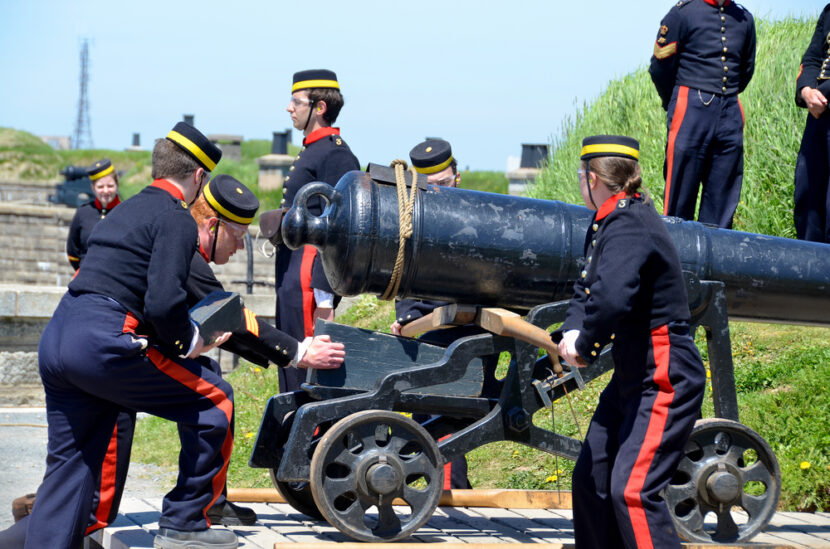HALIFAX – Visitors to the Halifax Citadel normally find themselves transported to the 1800s.
Built in 1856, the national historic site now boasts regiments of uniformed re-enactors playing the part of the kilted 78th Highlanders who would have populated the fort in the mid-19th century.
Marching drills on the parade grounds, an hourly changing of the guard, regular musket demonstrations and the boom of the daily noon gun are all normal sights and sounds at the Halifax landmark.
“Unlike a virtual exhibit, this is tactile. It’s real,” said Hal Thompson, a product development officer at Parks Canada and one of the people building a full-sized replica battlefield trench from scratch.
“You step back in time and space.”
The above-ground replica trench being constructed in the fort’s dry moat will eventually be more than 75 metres long.
Just like the trenches Canadian soldiers used 100 years ago, the Citadel’s replica is made of wooden walls with sandbags on top, and includes a command post, dugouts and a nurses’ tent.
“My favourite part (of the exhibit) is that I’m not allowed to do this in my backyard, but I can do it here at work,” Thompson added jokingly.
Canadian soldiers were stationed in such second-line trenches in France for three to six days at a time, the officers on luxurious chicken-wire beds and the other soldiers in literal holes in the wall.
First World War interpreters in the trench represent the 25th Battalion Nova Scotia Rifles _ the first Nova Scotian regiment to see front-line action – and the nurses who would have accompanied them.
“If you sit down here in the rain, in a wool uniform or a wool coat, or you’re down here with a hammer building it in the rain, like I was about a month ago, you start to feel a little bit of – just a touch – of that experience,” Thompson said.
Visitors can try on gas masks, experience field medicine first-hand, and peep over the parapet of the trench using a periscope to see what no man’s land would have looked like.
“It wasn’t fun historically, but it is an enjoyable thing to put yourself in a different time and place,” Thompson said.
“(You) experience that for just a small period of time, and then you go back to your life.”
Thompson says the exhibit puts visitors in a specific moment, but he hopes it also gives insight into our collective history.
“When we talk about nation building, where’d our country come from?” he said. “What did people have to go through to get to where we are today?”
This year marks the centennial of the beginning of Canada’s participation in the First World War.
Almost 420,000 Canadian troops were sent overseas over the following three years, according to Statistics Canada. Of those, more than 130,000 were wounded.
At least another 56,000 died.
“Humans are funny. We seem to learn by doing terrible things to each other,” Thompson said. “That’s one of the lessons of war.”
Interative exhibits like the Citadel’s may be able to remind us of that lesson, Thompson said.
“(Trench warfare) was kind of the beginning of the end,” he said.
“Hopefully, the future of the world looks a little better.”
